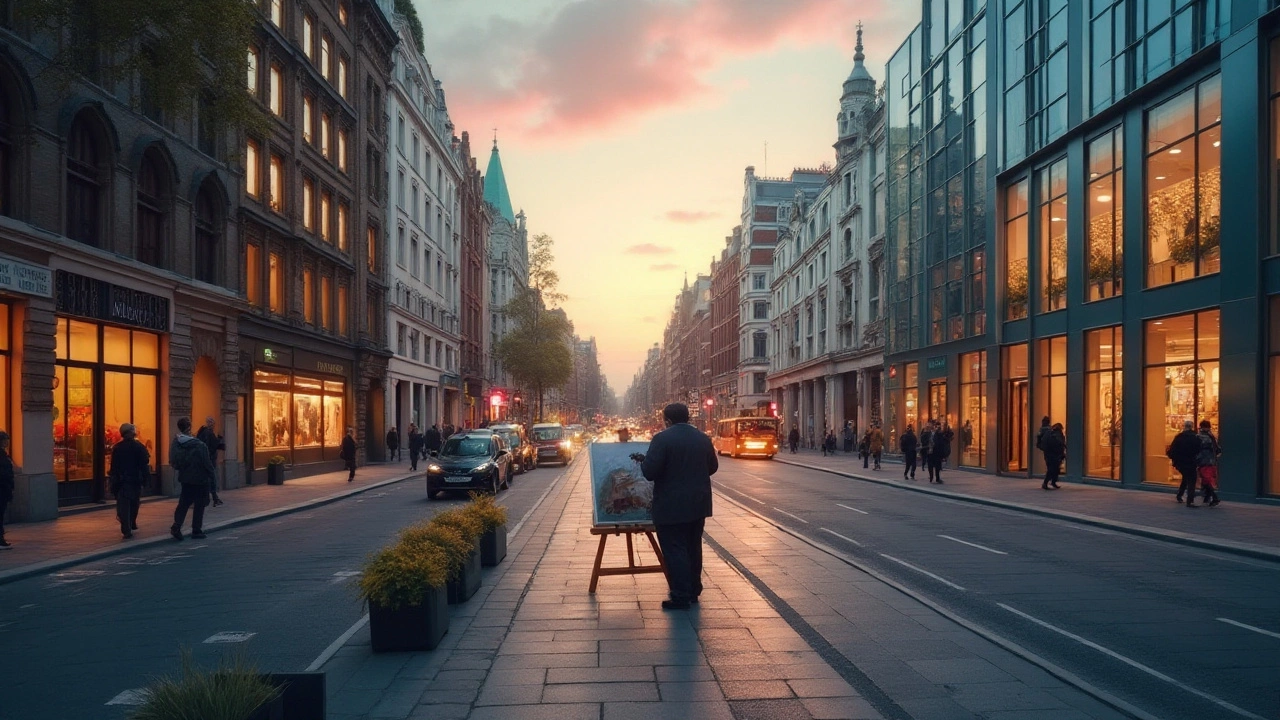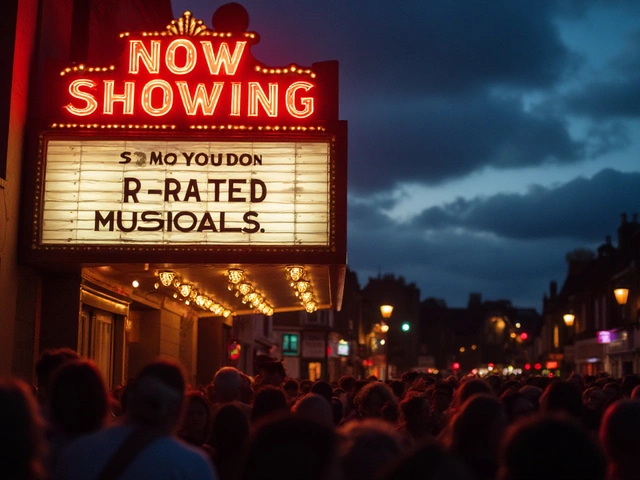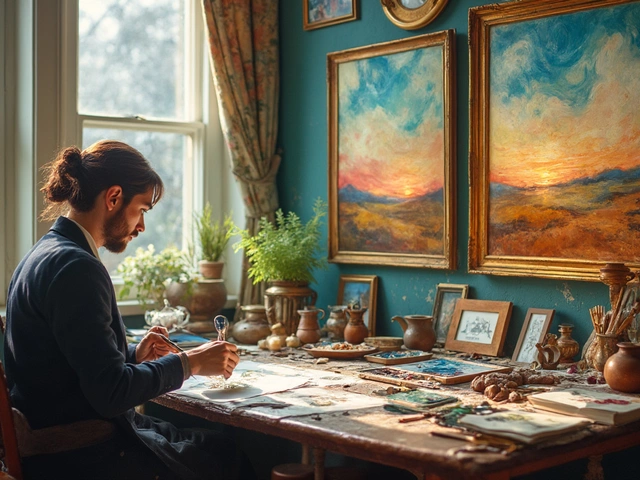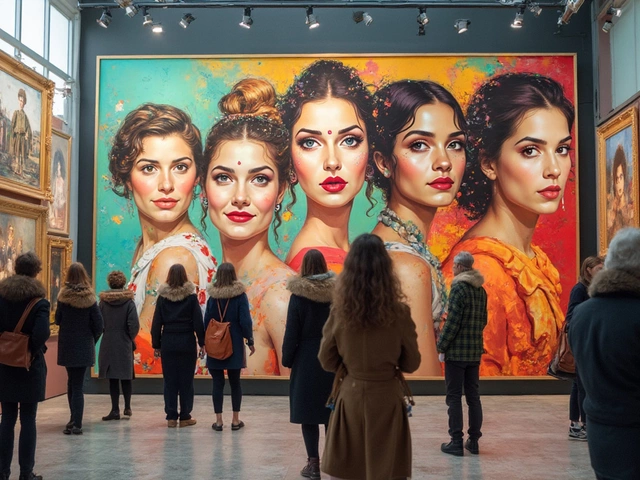Contemporary art is a vibrant and dynamic field that stretches across various forms, each contributing uniquely to our cultural tapestry. In a world that continually evolves, these art forms serve as mirrors, reflecting both societal change and individual expression. From the structured creativity of architecture to the emotive power of music, each form has its own way of communicating complex ideas and emotions.
Art in the contemporary era is not just about aesthetics but also about engaging with the pressing issues of our times. By understanding the significance of these seven major art forms—architecture, sculpture, painting, literature, music, performing arts, and cinema—we gain insights into not just the art itself, but the human condition it portrays. Exploring these forms helps us appreciate the depth and breadth of creativity that emerges in response to modern challenges and triumphs.
- Architecture: The Canvas of Urban Landscapes
- Sculpture: Three-Dimensional Innovation and Expression
- Painting: Colors That Define New Perspectives
- Literature: Words that Transform Realities
- Music: The Rhythm of Modern Life
- Performing Arts: The Stage of Human Experience
- Cinema: Visual Storytelling in the Digital Age
Architecture: The Canvas of Urban Landscapes
Architecture is more than just the act of building structures; it is the artistry of shaping the spaces we inhabit. As a major form of contemporary art, architecture reflects the values and needs of modern society, while also influencing the future of urban living. From skyscrapers that redefine city skylines to sustainable buildings that harness technology for better efficiency, architecture offers a unique perspective into the technological and cultural shifts of our age. Every building, whether residential or commercial, tells a story about the aspirations and intentions of its creators, as well as the societies they serve. One cannot overlook the role of architecture in shaping our modern world—it remains an integral part of how we perceive and interact with our environments.
The beauty of contemporary architecture lies in its diversity and innovation. Today’s architects blend various styles and technologies to create structures that are not only functional but also visually striking. These designs often push the boundaries of what's possible in construction, incorporating elements like organic shapes, environmentally friendly materials, and advanced engineering techniques. A prominent example of such innovation is the Burj Khalifa in Dubai, which, standing at an astounding 828 meters, not only holds the title of the world's tallest building but also embodies a pinnacle of engineering prowess and design ingenuity.
Amid urbanization, architects face the pressing challenge of creating spaces that accommodate population growth while minimizing environmental impact. Herein, sustainable architecture becomes imperative. Green building practices, such as utilizing solar panels, green roofs, and rainwater harvesting, aim to reduce the ecological footprint of new constructions. The Bullitt Center in Seattle is often cited as the greenest office building in the world, epitomizing such endeavors. It employs a variety of technologies to operate as a net-zero energy building, inspiring a new wave of eco-friendly architectural solutions.
Inspiring examples aside, architecture also plays a social role, bridging gaps between functionality and aesthetics, community needs and innovation. In cities like Barcelona, architectural marvels like Antoni Gaudí's Sagrada Família offer cultural and spiritual contemplation spaces, showcasing how art and architecture can provoke thought and reflection. As Gaudí himself famously remarked,
"The straight line belongs to men, the curved one to God."This philosophy illustrates how architectural design can transcend mere function, offering spiritual and emotional connections between the physical and the metaphysical.
Modern architecture is not just about individual buildings but the tapestry they collectively form within a city. Urban planning—considering factors such as transportation, public spaces, and residential areas—ensures that cities grow in a balanced manner. This integration often uses architecture as a tool to foster not just economic growth but also cultural enrichment and social interaction. As urban areas expand, the role of architects and urban planners becomes increasingly crucial, shaping cities that are both livable and alive with art.
Sculpture: Three-Dimensional Innovation and Expression
Sculpture, as a form of contemporary art, invites us into an intricate dance of perspective and perception. It transcends the constraints of two-dimensional art forms by offering a tactile experience that is both physical and emotional. This art form has evolved remarkably over the years, integrating new materials and technologies, thus reshaping not just the medium but the message conveyed. Whether it’s through the cold elegance of metal or the delicate balance of clay, sculptures tell stories that paintings or literature might struggle to express in the same spontaneous way. This ability to occupy space allows sculptures to interact with their environment and audience, creating a dialogue that is continually shifting and renewing itself.
The roots of sculpture run deep in human history, with early humans crafting rudimentary figures to reflect their beliefs and surroundings. Fast forward to today, and the influence of modern art is palpable in sculptures worldwide. Artists like Anish Kapoor and Jeff Koons have made names for themselves by pushing the boundaries of materials and techniques. Kapoor's reflective surfaces bend light and space, challenging viewers to question the very nature of perception. Such works are not just art—they're experiences. As philosopher Arthur Danto once said,
"In our time, probably nothing has been left uncovered by artists."
Today’s sculptors play with form and void, inspiring us to reinterpret our reality. Traditionally, sculptors were confined to the classical materials such as bronze, marble, and stone; however, contemporary artists often incorporate unconventional materials such as nylon, silicone, and even digital components. This transformation is not merely aesthetic but also symbolic of the evolution in the art world’s response to industrialization, globalization, and technology. By incorporating found objects and multimedia elements, they address issues ranging from environmentalism to identity politics. A visit to a modern sculpture exhibition might even include installations that use sound or virtual reality to enhance the artwork’s spatial engagement.
For those considering engaging with sculpture as a hobby or profession, the tools at an artist’s disposal are varied and many. The process often begins with sketches or digital renderings, moving onto more deliberate choices in medium and technique. Novices might start with a medium like clay for its malleability, whereas experienced artists increasingly turn toward digital tools for 3D modeling, offering unprecedented control and possibilities. The creation of a sculpture is meticulous, from conceptualization to the tangible presence. As art critic Clement Greenberg noted, the distinctiveness of sculpture is not just in its form, but in its ability to "claim the space it exists within." In sculpting, performing this delicate dance between planning and improvisation is key, reminding us that, like life, art is often about making something beautiful from chaos.

Painting: Colors That Define New Perspectives
In the sweeping panorama of contemporary art, painting remains a key player, adapting and evolving alongside society's shifts. Its power lies in its ability to reframe our vision of the world. This art form transcends traditional boundaries, positioning itself not only as a medium of personal expression but also as a commentary on social landscapes. Painting, in the context of contemporary times, acts as a visual diary; it captures the essence of an era with shades and strokes that provoke, soothe, and ignite discussion. The contemporary approach to painting often involves integrating unconventional materials and techniques, resulting in pieces that challenge perceptions and stir emotions. This evolution in painting has been significant, driving artists to redefine what it means to paint in the modern world.
The transition from classical painting to more modern interpretations reflects a radical departure from the constraints of realism and romanticism that once dominated the art world. Embracing abstract representations, contemporary artists draw inspiration from a myriad of sources. With technological advancements, digital painting has also emerged as a subgenre, blurring the lines between handmade and digital signatures. In this vast landscape, painting becomes a reflection of both the collective and individual psyche, visually interpreting experiences that resonate on a global scale. The rise of street art, often categorized under contemporary painting, illustrates how artists use public spaces as their canvases, transforming urban environments into galleries open to all. The impact of these public artworks extends beyond aesthetics, often sparking conversations on cultural, political, and social issues.
"The aim of art is to represent not the outward appearance of things, but their inward significance." — AristotlePainters today leverage art to dissect and address matters that go beyond the superficial, delving into deeper dialogues about identity, existence, and community. The democratization of art through accessibility initiatives and social media has broadened the reach of contemporary painting. Now, platforms like Instagram are significant arenas for emerging artists to share their work with a global audience, driving visibility and encouraging dialogues across cultural boundaries. This accessibility enriches the artistic narrative with diverse voices, proving essential in a time where inclusivity is crucial. As a result, painting as a medium is not bound by location or tradition but is an ever-evolving form of expression that resonates worldwide.
In the fast-paced realm of contemporary art, painting consistently remains a pillar while also metamorphosing into new forms that defy convention. As styles shift, artists continue exploring fresh perspectives and embracing new technologies, painting maintains its role as a means to challenge, motivate, and inspire. While the contemporary art world seems vast and sometimes intimidating, painting brings an intimate, tactile element that remains authentic and relatable. This art form's significance could be seen as a testament to its persistent relevance. The canvas, in its many forms, continues to serve as a powerful platform where colors define new perspectives that are crucial in understanding the myriad nuances of modern humanity.
Literature: Words that Transform Realities
Literature stands as one of the most profound forms of contemporary art, where words are meticulously chosen to convey human experiences, emotions, and ideas. It is a vast domain, encompassing various genres, each with the potential to shape perspectives and influence societal norms. From novels and poetry to short stories and essays, literature offers a unique lens through which we can explore the world and our place within it. The power of words lies in their ability to capture the nuances of human existence, to illuminate truths, and sometimes, to challenge the status quo. A well-crafted piece of literature can transport readers to different times and places, allowing them to experience life through the eyes of another.
The role of literature in contemporary art is ever-evolving. As society changes, so do the themes and topics that literature tackles. Authors often draw from their personal experiences or the socio-political climate to create works that resonate with readers. For example, the contemporary novel has seen a rise in narratives that address issues like identity, migration, and climate change. These stories not only entertain but also educate, providing insight into complex global challenges. The power of literature lies not only in what it says but also in what it inspires. As Maya Angelou once said, "There is no greater agony than bearing an untold story inside you." This sentiment captures the enduring allure of literature—the need to express, to share, and to connect.
In the digital age, the reach of literature has expanded. E-books and online platforms have made literature more accessible than ever, allowing authors to reach a global audience. This accessibility has resulted in a more diverse landscape of voices and stories. Readers now have the opportunity to explore narratives from different cultures and backgrounds, broadening their understanding of the world. An interesting development in contemporary literature is the rise of interactive storytelling, where readers can influence the direction of the story. This innovation blurs the line between author and audience, creating a collaborative art form that reflects the interconnectedness of modern digital life.
Despite the challenges posed by digital media, traditional books continue to hold a special place in the hearts of literary enthusiasts. There is an undeniable charm in the tactile experience of holding a book, turning its pages, and immersing oneself in its world. Libraries and bookstores remain cherished spaces, fostering a sense of community and shared love for literature. In this way, literature serves as both a personal and communal art form, bringing people together to explore ideas and engage in meaningful dialogue. The significance of literature in contemporary art and society cannot be overstated. It's a medium through which we can explore the depths of human experience, challenge our beliefs, and emerge with deeper insights into the world around us.
"The power of fiction is that it allows you to imagine a world outside your own, pushing you to think beyond your immediate experience," - Chimamanda Ngozi Adichie
The future of literature is bright, as new voices emerge to tell stories that reflect the diversity of the human experience. As society continues to evolve, so too will the themes and styles of literature, ensuring its place as a vital component of modern art. We are living in a time when stories can both unite and transform us, offering wisdom, hope, and solace in an ever-changing world. The vibrant world of literature shows us that words indeed have the power to transform realities, shaping our perceptions and leaving a lasting impact on society.

Music: The Rhythm of Modern Life
In the tapestry of contemporary art, music stands out with its profound ability to evoke deep emotions and transcend cultural boundaries. Music today can be as complex as a classical symphony or as raw and energetic as a punk rock track. It encapsulates the broad spectrum of human emotion, and at the same time, advances in technology have broadened music’s reach like never before. With platforms such as streaming services and social media, artists have unprecedented opportunities to share their work globally, redefining what it means to be a musician in the 21st century.
The impact of music on society is significant, shaping cultures and even political landscapes. During the 20th century, genres like jazz and rock and roll not just entertained but also acted as catalysts for social change, breaking down racial barriers and giving voice to underrepresented communities. As we move through the 21st century, new genres emerge, often blending various styles to create unique soundscapes that reflect our diverse societies. Electronic music, for example, has evolved with the digital age, integrating elements from traditional genres to create something entirely new.
"Without music, life would be a mistake." – Friedrich NietzscheModern music’s ubiquitous nature is facilitated by the digital era, where anyone with internet access can be a creator. This democratization has allowed for an explosion of genres and styles as artists from different backgrounds find new ways to express themselves. Another fascinating development is the increasing role of artificial intelligence in music production. AI-generated compositions are now a reality, sparking debates about the future of creativity and originality in music. This technological integration raises questions: Will AI complement and inspire human creativity, or will it eventually overshadow human musicians?
Statistics show that music consumption has risen sharply with the advent of streaming platforms. According to a 2023 report, streaming services accounted for 83% of recorded music revenue globally, indicating a shift away from traditional physical sales.
| Year | Streaming Revenue (in billion USD) |
|---|---|
| 2018 | 8.9 |
| 2020 | 12.4 |
| 2023 | 15.8 |
Moreover, the socio-cultural role of music in contemporary art is not limited to entertainment. It is used as a medium for activism and healing. Musicians use their platform to raise awareness on issues such as mental health, climate change, and human rights. Concerts and festivals become venues for gathering people of different walks of life, often inspiring collective action and societal reflection. Music therapy is another burgeoning field that exemplifies music's powerful role in promoting well-being, utilizing its therapeutic potential to improve mental health outcomes across the globe.
Performing Arts: The Stage of Human Experience
The realm of performing arts is an ever-evolving canvas where human emotions and societal narratives are vividly brought to life. Within this domain, theater, dance, and music converge to tell stories that resonate across cultures and generations. Performing arts are unique in their ability to capture the transient beauty of a moment, creating experiences that are as fleeting as they are impactful. From ancient rituals to contemporary displays, these performances have always been a reflection of the prevailing cultural attitudes and the zeitgeist of their times, making them a crucial part of the contemporary art tapestry.
Theater, as one of the oldest forms of performing arts, has continually reinvented itself to address themes like identity, politics, love, and the human condition. Renowned playwrights such as Shakespeare and modern auteurs like Tony Kushner have pushed boundaries and explored intricate narratives that compel audiences to reflect and ponder. Dance, with its roots in rituals and ceremonies, captivates through the expressive power of the body. Styles such as ballet, contemporary, and hip-hop each contribute distinct vocabularies that challenge and redefine traditional boundaries. Dance's ability to communicate without words makes it a universal language, understood and appreciated the world over.
Music, a vital component of performing arts, transcends linguistic barriers, bringing people together across divides. Orchestras, opera, and modern concerts each offer unique experiences, from the solemn power of a symphony to the unifying chorus of a stadium event. A fascinating anecdote is Beethoven's Ninth Symphony, a masterpiece that continues to inspire with its message of joy and unity. Music's omnipresence in the performing arts underscores its importance in both storytelling and emotional expression. As Leonard Bernstein once said,
"Music can name the unnameable and communicate the unknowable."
Today's performing artists are using new technologies such as virtual reality and digital media to expand the boundaries of what performance means. These innovations not only broaden access to performances but also allow for more interactive and immersive experiences. A recent study by the National Endowment for the Arts revealed that attendance at performing arts events has seen significant shifts, with virtual performances gaining popularity. This adaptability showcases the art's resilience and its ability to remain relevant in an ever-changing world.
The significance of modern art in the performing arts cannot be overstated. It is a living tradition that responds to contemporary issues while celebrating human creativity. Initiatives like performance art festivals and workshops foster community engagement and grow this vibrant sector's future. Such platforms provide opportunities for new voices to emerge and contribute fresh perspectives, ensuring that the performing arts remain a dynamic part of our cultural landscape. Whether as a performer or an audience member, engaging with performing arts offers an opportunity to connect with human stories and emotions, making it an essential aspect of contemporary art.
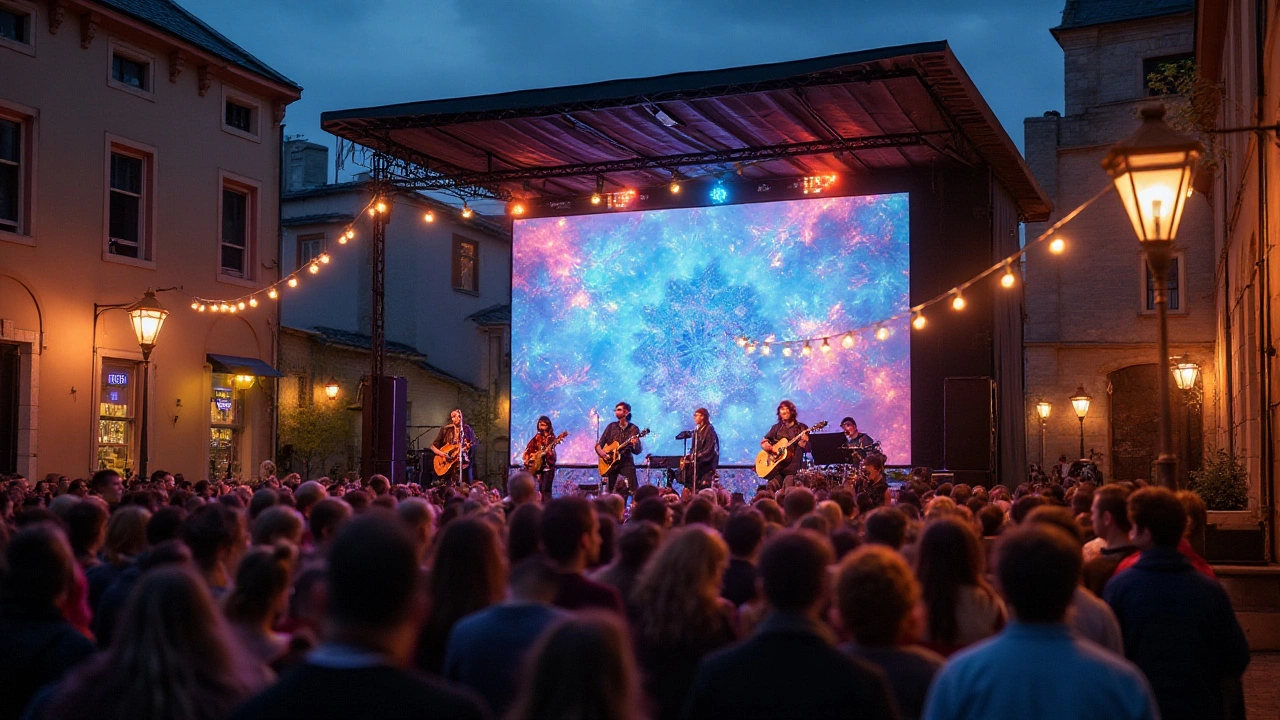
Cinema: Visual Storytelling in the Digital Age
In today's fast-paced world, cinema remains one of the most compelling forms of visual storytelling, capturing both imaginations and hearts with every frame. Since the late 19th century, films have evolved from black and white silent reels to vibrant, digital spectacles. The shift to this digital age has transformed cinema, making it more accessible and engaging than ever before. Modern technology allows for incredible special effects and high-definition imagery, which captivate audiences in unprecedented ways. As streaming services become more prominent, the traditional cinema landscape continues to adapt, offering endless options for how stories are both told and consumed.
The art of filmmaking not only entertains but also provides profound societal commentary. Movies often reflect prevailing cultural attitudes, capturing the zeitgeist of the times. Consider blockbusters like "Avatar," which not only dazzled with groundbreaking CGI but also commented on environmental issues and the dangers of corporate greed. Through such films, directors leverage the medium to explore complex themes, pushing audiences to ponder beyond the surface narrative. The power of cinema to shape perspectives and ignite change is undeniable, as visual storytelling bridges gaps between different cultures and generations.
One cannot ignore the role of notable filmmakers in shaping the contemporary art scene. Visionaries like Christopher Nolan, known for exploring the human psyche within non-linear plots, or Greta Gerwig, whose poignant storytelling often shines a light on female perspectives, continuously push the boundaries of modern cinema. The advent of digital technology has democratized filmmaking, giving independent filmmakers and diverse voices a platform to reach wider audiences without the massive budgets once deemed necessary. This shift has added layers of richness and diversity to the narratives shared across theaters worldwide.
"Cinema is a matter of what's in the frame and what's out," Alfred Hitchcock once said, encapsulating the essence of storytelling through film. The director's craft involves meticulous attention to detail—each scene, sound, and subtle expression contributes to the larger narrative arc. Such precision makes cinema a unique art form capable of evoking deep emotional responses.
As streaming giants like Netflix and Disney+ expand their libraries, we see a new era of distribution emerging. Surprisingly, data from 2022 showed that while traditional box office sales declined, streaming subscriptions experienced a 25% growth year-on-year. This trend highlights the evolving preferences of audiences, who favor convenience and variety. However, the traditional cinema experience remains irreplaceable for many, offering a communal space that fosters shared experiences and collective emotions that are harder to replicate at home.
